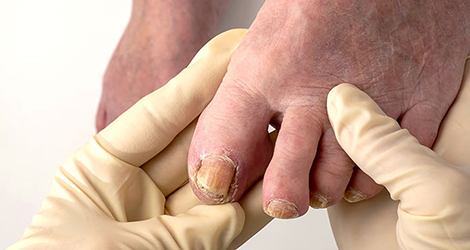 Involuted toenails, often referred to as curved toenails, can be both painful and concerning. This condition occurs when the edges of the nail curve inward, sometimes digging into the skin. While many people experience this issue at some point in their lives, few understand what causes it or how to effectively treat it without surgery.
Involuted toenails, often referred to as curved toenails, can be both painful and concerning. This condition occurs when the edges of the nail curve inward, sometimes digging into the skin. While many people experience this issue at some point in their lives, few understand what causes it or how to effectively treat it without surgery.
What Causes Involuted Toenails?
Involuted toenails can develop for a variety of reasons. Some of the most common causes include:
- Genetics: Some people are simply more prone to curved toenails due to their genetic makeup.
- Improper Nail Trimming: Cutting toenails too short or rounding the edges can encourage the nails to grow inward.
- Tight Footwear: Shoes that squeeze the toes can force the nails to curve as they grow.
- Trauma: Injury to the toe or nail can alter the nail’s growth pattern, leading to curvature.
- Medical Conditions: Certain conditions, such as arthritis or fungal infections, can cause the nails to change shape.
Recognizing the Symptoms
The symptoms of involuted toenails can vary depending on the severity of the condition. Common signs include:
- Pain: Discomfort or tenderness along the sides of the toenail, especially when pressure is applied.
- Redness and Swelling: The skin around the nail may become inflamed and sensitive.
- Infection: In severe cases, the area may become infected, leading to pus and increased pain.
- Difficulty Wearing Shoes: Curved toenails can make it painful to wear shoes, particularly those with narrow toe boxes.
Non-Invasive Treatment Options
Fortunately, there are several non-invasive treatment options available for those suffering from involuted toenails. These treatments focus on correcting the curvature and relieving pain without the need for surgery.
- Proper Nail Care: Regular trimming and filing of the nails can help prevent the nails from curving further. It’s important to cut the nails straight across and avoid rounding the corners.
- Footwear Adjustments: Wearing shoes that provide ample space for the toes can reduce pressure on the nails and allow them to grow more naturally.
- Toe Separators: In some cases, using toe separators can help realign the toes and reduce the curvature of the nails.
- Nail Braces: A relatively new treatment, nail braces are applied to the surface of the nail to gradually straighten it over time. This method is pain-free and can be a long-term solution for involuted toenails.
- Topical Treatments: Applying antiseptic creams or ointments can help prevent infection and reduce inflammation around the curved nail.
Involuted toenails can be a persistent and painful problem, but with the right care and treatment, you can find relief without resorting to surgery. If you’re experiencing discomfort from curved toenails, consider exploring non-invasive options like nail braces or adjusting your footwear. At Footopia, we specialize in providing gentle, effective treatments for all types of toenail issues, helping you get back to comfortable, healthy feet.

